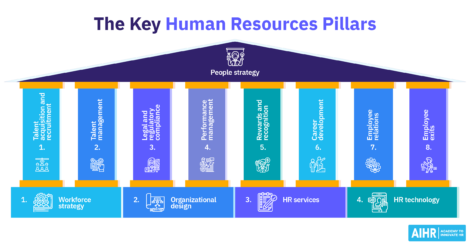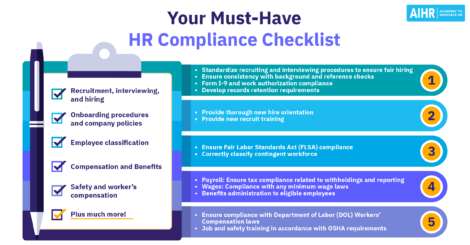Termination of Employment Contract: Everything HR Needs To Know

HR professionals must be skilled in navigating the complexities of the termination of employment contract. From legalities and practicalities to managing the emotional aspects of the process, this article takes a closer look at what employment contract termination entails and what HR needs to know about it.
Contents
What is an employment contract?
Reasons for termination of contract of employment
Terminating employment contract step by step
FAQ
What is an employment contract?
An employment contract is a legal agreement between an employer and an employee that details the terms and conditions of employment. The goal is to formalize the working relationship by clearly specifying what is expected from both parties.
Having an employment contract in place reduces the risk of employment disputes. When such disagreements arise, this document is a crucial reference point, clarifying responsibilities and ensuring all parties comply with the established terms and conditions. While an offer letter is also an important document in establishing an employment relationship, it does not carry the same legal weight.
The contract usually also states what procedures need to be followed and what actions need to be taken in case of termination of the employment contract. This refers to the end of an employee’s agreement with the company and can be voluntary or involuntary.
Reasons for termination of contract of employment
There are various legitimate grounds for terminating an employment contract. These may vary (slightly) depending on what country you are in, but usually they include reasons like:
Mutual agreement
Parties involved in an agreement always have the option to end that agreement by mutual consent. The termination of the employment contract, in this case, can take place via a process stipulated in said contract or, if such a clause doesn’t exist, simply by both parties agreeing that they want to terminate the contract.
This can happen, for example, when an employee decides to leave the company for another job opportunity and completes the notice period specified in the employment contract.
Poor performance
Poor employee performance can be related to a person’s job, behavior, or both.
Examples of job-related poor performance include not meeting targets, making mistakes, not responding to feedback, and missing deadlines.
Behavior-related poor performance can look like excessive absenteeism, being rude or disrespectful to co-workers and managers, and having a negative attitude.
In case of poor employee performance, the first step usually is to set up a performance improvement plan (PIP). This individualized, action-oriented plan clearly states where employees fall short, how they can improve, and within what timeframe. If this doesn’t improve the employee’s performance, termination of the employment contract can be justified.
Misconduct
Employee misconduct refers to the deliberate violation of a written or implied employee policy. This intentional disregard for corporate rules and expectations can result in basic verbal or written disciplinary action, suspension, or employment contract termination.
Other common reasons for employment contract termination include (sexual) harassment, theft, substance abuse, using company resources for personal benefit, and sharing confidential information. Some of these are also referred to as gross misconduct.
Redundancy
Redundancy typically occurs when there are changes to an organization’s operational requirements: the company relocates, shuts down particular projects or parts of the business, downsizes because of an economic downturn or merger, or automates certain processes so that the job can be done without an employee.
An employee can only legally be made redundant if there is no need for their job to continue to exist (it literally becomes redundant).
Other requirements for a genuine redundancy include the fact that the employer doesn’t have a different role available for the employee and that the company can not put out a job advert for the position they just made redundant.
If all of these conditions are met, the redundancy results in the termination of the employment contract.
In the US, employment is largely at will. Put simply, this means that employers can decide to terminate the employment contract for any reason, at any time, as long as it’s not discriminatory or otherwise problematic.
Employees, in turn, are also free to leave a job at any time and for any or no reason with no adverse legal consequences.
Terminating employment contract step by step
Terminating an employment contract typically isn’t the most fun thing to do. On top of that, specific requirements need to be met for the termination to be legally valid and to avoid potential wrongful termination cases.
This is why you want to have a solid, well-structured employee termination process in place. Here are some steps to consider:
1. Follow your termination policy
An employee termination policy is a formal written document that details how employee termination happens within an organization. It outlines the various steps of the termination process and provides guidelines for both management and HR staff.
As such, your termination policy forms the starting point of the contract termination process and structures it. If you don’t have a policy yet, it’s time to start creating one.
2. Review legal considerations
Critical legal aspects may differ from one country or state to another and between different types of employment contracts. This should be something that is covered in your termination policy.
You want to ensure you are fully aware of the relevant local employment laws, such as what constitutes voluntary and involuntary termination, how to prevent wrongful termination, etc.
If possible, talk with someone from the legal department who knows what’s important in this regard, and if this isn’t an option, you might want to consult with an employment lawyer.
In the Netherlands, for example, employers can only terminate an employment contract due to unsatisfactory performance if they have given the employee ‘sufficient opportunity to improve their performance,’ for instance, in the form of a performance improvement plan.
Failure to do so could lead to the employee starting an unfair or wrongful dismissal case against the company.
3. Put employee rights first
Terminating an employment contract is usually a sensitive issue, so the employee should always come first. Be as transparent, detailed, and emphatic as possible, both in delivering the message and with your termination policy.
An example of this transparency can be found in the Worker Adjustment and Retraining Notification Act (WARN) in the US. This act requires employers of 100 or more employees to provide a 60-day prior notification of plant shutdowns or layoffs of 50 or more employees simultaneously.
Another example of being transparent and detailed with employees is the PIP we mentioned several times; it gives employees all the information they need to improve their performance and avoid an unwanted termination of employment contract.
4. Prepare a termination letter
At some point, you will need to officially notify the employee that their contract will be terminated. For this reason, and to have a paper trail for both the HR and the legal department, it’s important to prepare a termination letter.
It is one of the most critical documents for departing employees since it states the official reason that ended their employment.
5. Conduct a termination meeting
Toward the end of the employment contract termination process, someone from the HR team and the employee’s (direct) manager will have a termination meeting.
Getting this meeting right is especially important when you, as the employer, are terminating the employment contract. There are a few things to keep in mind, including:
- Bring all the necessary documentation (i.e., performance reviews, written warnings, and relevant correspondence).
- Use an employee exit checklist to ensure you address everything you need during the meeting.
- Clearly explain the reason for termination (again).
- Be straightforward but empathetic, and avoid unnecessary details that could create confusion or legal complications.
- Be specific about the next steps regarding their final paycheck, benefits, unused holidays, ongoing projects, etc. It may be a good idea to prepare a termination document with all this information to give to the employee.
- Allow the employee to ask questions and let them know whom they can turn to if they have questions after the meeting.
- Thank them for their contribution.
- Make sure to always have two employer representatives in the meeting for both legal and safety reasons.
- From a practical perspective, try to have the termination meeting at the end of the day and avoid having it on a Friday, as people will have limited access to unemployment resources and career transition services over the weekend.
HR tip
In the meeting, mention any available support, such as Employee Assistance Programs (EAPs), for emotional and practical assistance during the transition.
6. Negotiate severance pay
When an employee’s contract termination happens through no fault of their own – for example, in case of redundancy due to a merger – they often receive a severance package.
While offering employees severance pay is common practice, it is not mandatory in every country.
What a severance package looks like can vary widely from one organization to another, but here are some common elements:
- A severance payment: For example, one week’s pay for each year of service to the employer (on top of their final paycheck).
- A temporary continuation of (certain) benefits
- Severance benefits such as job counseling
- Accrued holidays and sick leave: Companies can decide to pay employees for their unused vacation and sick days.
If your organization does offer severance packages, you want to prepare a severance agreement and share it with the employee whose contract is being terminated during the termination meeting. Any severance negotiations can take place once the meeting is over.
7. Provide the final settlement
Once both parties have signed the severance agreement and all the other formalities have been completed, it’s time to proceed with the so-called full and final settlement (FNF).
This means that the employee must be paid for their last working month plus everything else agreed upon (i.e., unused holidays, severance pay, etc.). The full and final settlement process should be straightforward and follow the guidelines set out in the employment contract.
8. Resolve disputes
If a dispute arises, for example, because the employee believes that they have been wrongfully terminated, the employment contract once again serves as a guideline. Based on what’s stipulated in the document about dispute resolution, procedures can be followed with often mediation as a first step, and if this fails, legal recourse as the next step.
HR tip
Include an explicit termination clause in your employment contracts to new hires. This creates clarity for both parties, reducing the risk of misunderstandings, disputes, and potential legal action.
Key takeaways
Termination of employment contract often isn’t a pleasant situation for HR or any of the parties involved to deal with. With a proper process in place, though, it can be as smooth and pain-free as possible.
Two documents form the basis for a solid termination process: the employment contract that includes a clear clause about contract termination and your organization’s termination policy that guides HR and management staff through each step of the termination process.
FAQ
Ideally, you terminate an employee’s contract by following the procedures and actions outlined in the employment contract and your organization’s termination policy.
The rules for contract termination depend on the reason for the termination and the country in which the termination occurs. In the US, for example, employment is mainly at will, meaning employers and employees can decide to terminate the employment contract for any reason at any time (with a few exceptions, and as long as the reasons are not discriminatory).
An employer can terminate a contract early if the employment contract holds a clause that allows early termination. Otherwise, early termination may be possible by mutual agreement.
Weekly update
Stay up-to-date with the latest news, trends, and resources in HR
Learn more
Related articles
Are you ready for the future of HR?
Learn modern and relevant HR skills, online












